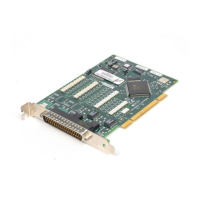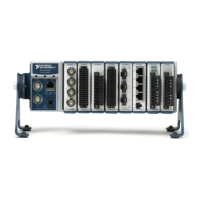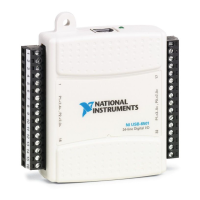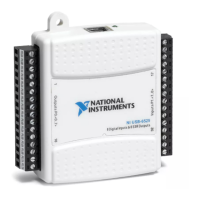© National Instruments | 4-27
X Series User Manual
AI Convert Clock Signal
Use the AI Convert Clock (ai/ConvertClock) signal to initiate a single A/D conversion on a
single channel. A sample (controlled by the AI Sample Clock) consists of one or more
conversions.
You can specify either an internal or external signal as the source of AI Convert Clock. You can
also specify whether the measurement sample begins on the rising edge or falling edge of
AI Convert Clock.
With NI-DAQmx, the driver chooses the fastest conversion rate possible based on the speed of
the A/D converter and adds 10 μs of padding between each channel to allow for adequate settling
time. This scheme enables the channels to approximate simultaneous sampling and still allow
for adequate settling time. If the AI Sample Clock rate is too fast to allow for this 10 μs of
padding, NI-DAQmx chooses the conversion rate so that the AI Convert Clock pulses are evenly
spaced throughout the sample.
To explicitly specify the conversion rate, use AI Convert Clock Rate DAQmx Timing property
node or function.
Caution Setting the conversion rate higher than the maximum rate specified for
your device will result in errors.
Using an Internal Source
One of the following internal signals can drive AI Convert Clock:
• AI Convert Clock Timebase (divided down)
• Counter n Internal Output
• Change Detection Event
• Counter n Sample Clock
• AO Sample Clock (ao/SampleClock)
• DI Sample Clock (di/SampleClock)
• DO Sample Clock (do/SampleClock)
A programmable internal counter divides down the AI Convert Clock Timebase to generate AI
Convert Clock. The counter is started by AI Sample Clock and continues to count down to zero,
produces an AI Convert Clock, reloads itself, and repeats the process until the sample is finished.
It then reloads itself in preparation for the next AI Sample Clock pulse.
Several other internal signals can be routed to AI Convert Clock through internal routes. Refer
to Device Routing in MAX in the NI-DAQmx Help or the LabVIEW Help for more information.
